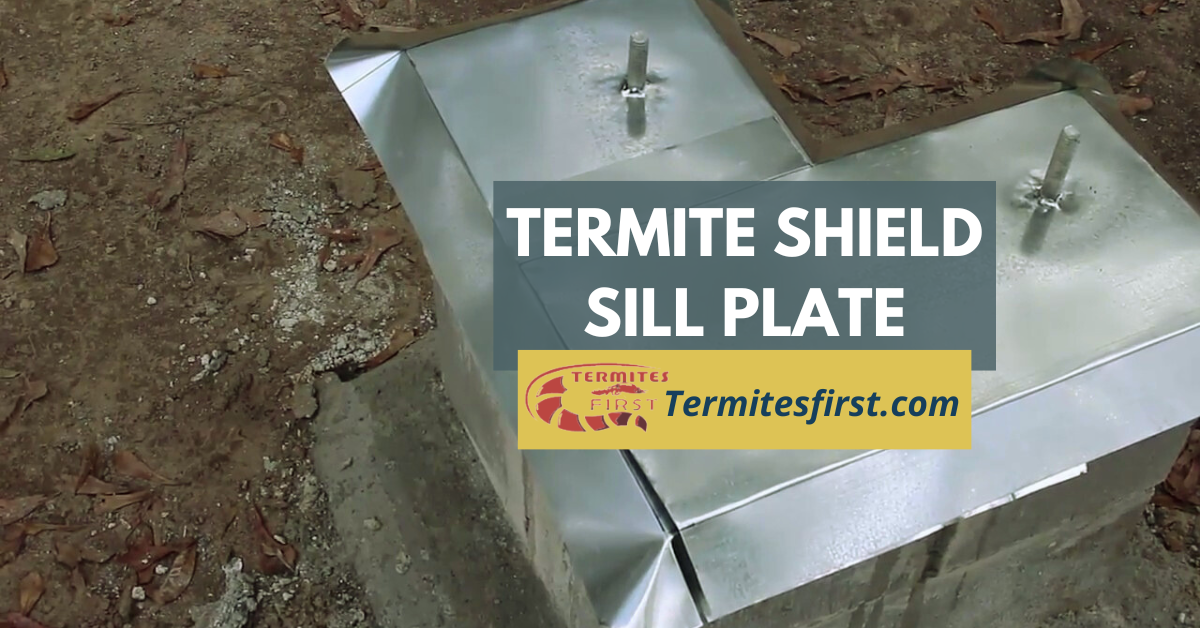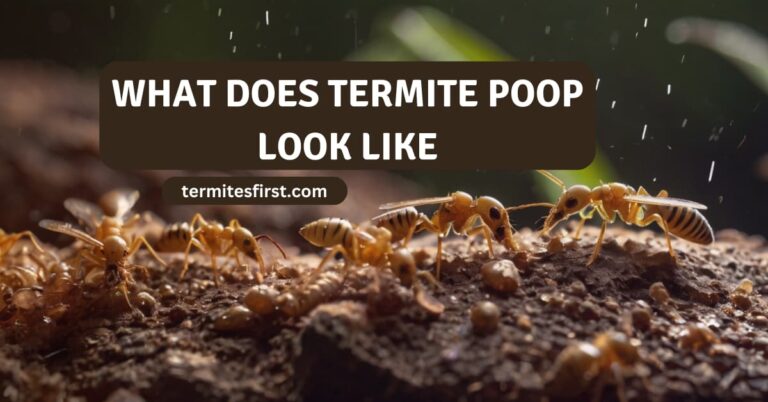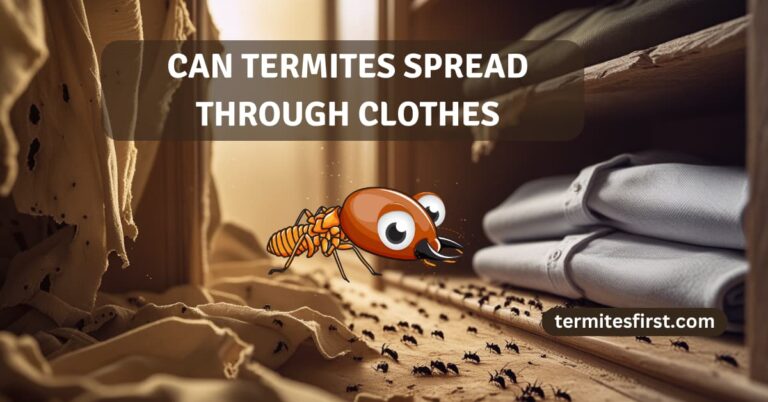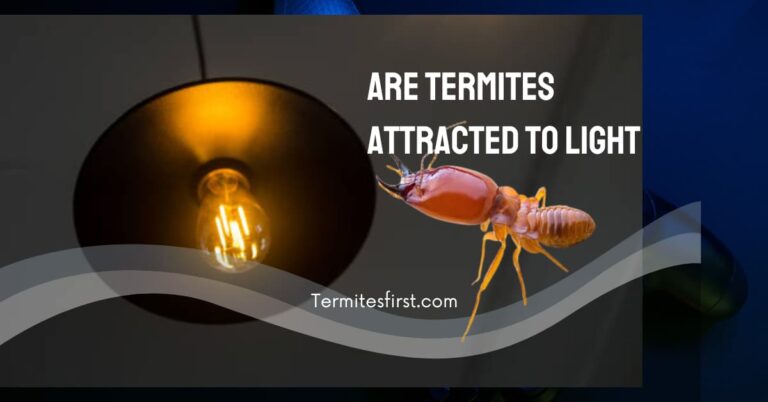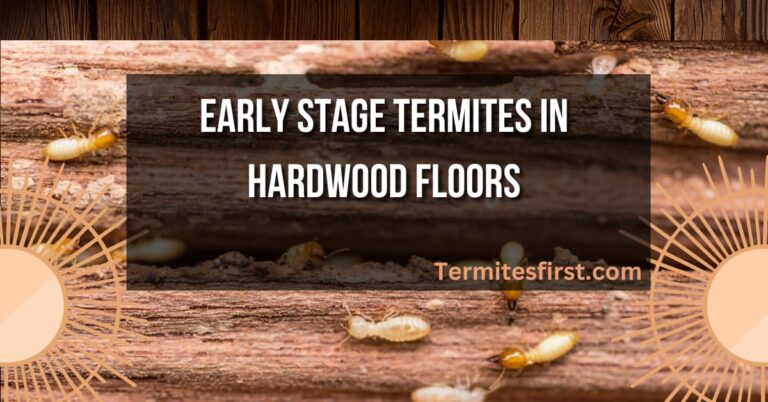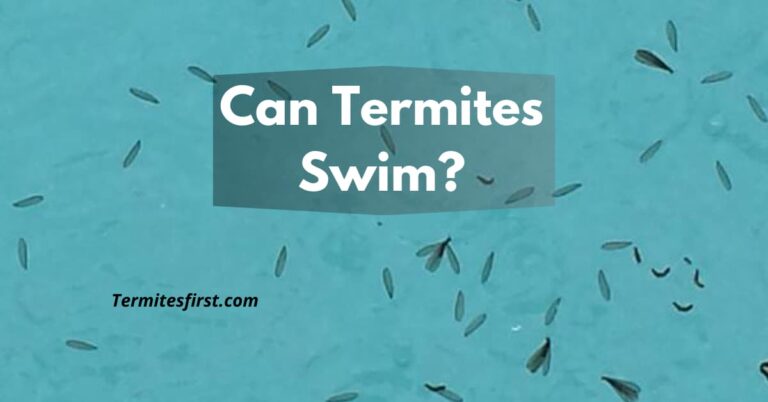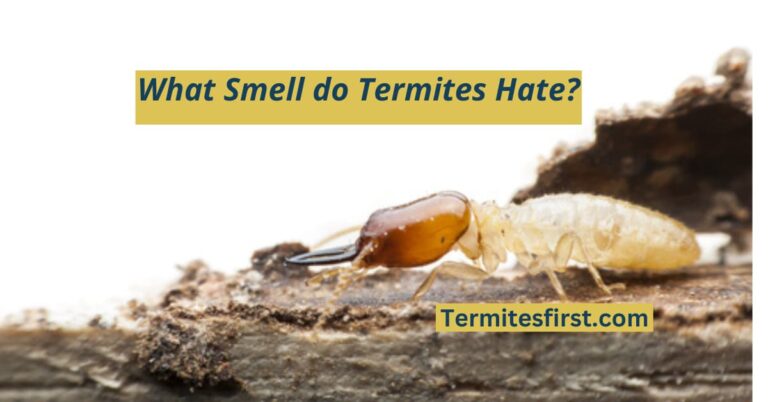Termite Shield Sill Plate: Your Ultimate Moisture Control Guide
Did you know that termites cause over $5 billion in property damage each year, particularly to exterior sheathing and mud sill, which raises the question of how to protect against them? As a homeowner, I understand the importance of protecting my investment with exterior sheathing, a concrete perimeter, and a concrete slab. One effective way to do this is by using a termite shield sill plate with a sealer on a concrete slab to protect against subterranean termites and tin. This simple yet powerful barrier, a sill sealer on the concrete slab, can prevent termites from invading my home and causing costly damage with copper.
Key Takeaways
- A termite shield sill plate with a sealer and copper is essential for preventing termite infestations and protecting your home’s structure. Consider installing a sill sealer with copper if you live in a termite-prone area.
- Proper moisture control is crucial; ensure that your sill plate is installed correctly with a sealer to prevent water accumulation, which can attract termites.
- Familiarize yourself with different types of termite barriers, such as physical options like sill sealer and chemical options, to choose the best fit for your building needs.
- Follow recommended installation techniques carefully, including the use of sill sealer, to enhance the effectiveness of the termite shield and ensure long-lasting protection.
- Regularly evaluate the effectiveness of your termite barrier, including the sill sealer, by inspecting for signs of damage or pests, and take action promptly if issues arise.
- Stay updated with expert tips on installation and maintenance, including sill sealer, from industry forums to keep your home safe from termites effectively.
Purpose of Termite Shield Sill Plate
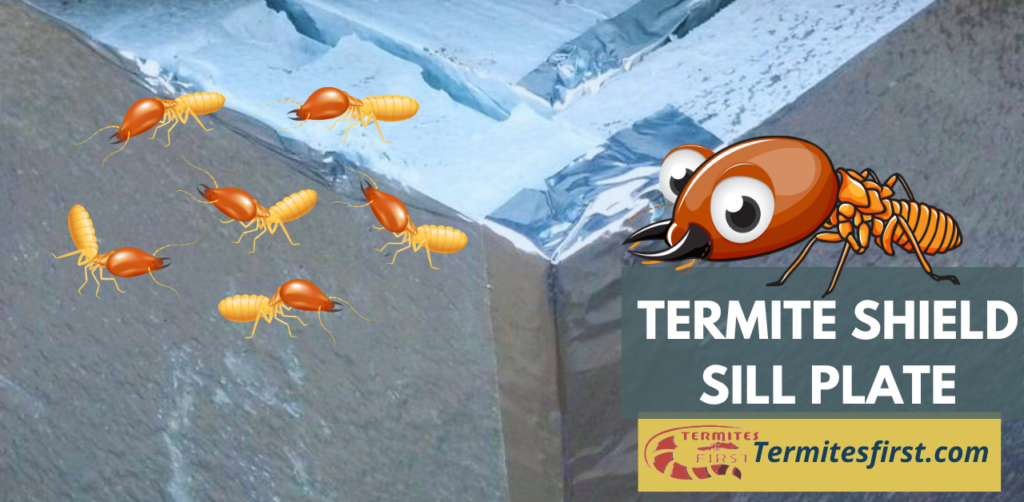
Termite Shields
Termite shields serve as a barrier against termite entry. They are typically made of metal or plastic. These materials, including sill sealer, prevent termites from reaching the wood components of a structure.
I find it fascinating how a simple piece of metal, like a chemical termite barrier or sill sealer, can protect a home from such destructive pests, along with nonchemical termite options and term base flashing barrier.
Termite shields and sill sealer should be installed in areas where wood meets concrete. This includes the sill plate, which is often the first line of defense against infestations, including a chemical termite barrier, nonchemical termite options, term base flashing barrier, and term flashing barrier. Proper installation, including a sill seal, ensures that there are no gaps for termites to exploit.
Sill Plate Function
The sill plate works closely with the termite shield. This wooden component anchors the building to its foundation. It transfers loads from the sill seal above to the term base flashing barrier below. The sill plate also creates a solid base for walls and framing, providing nonchemical termite protection.
Installing a sill plate without a termite shield can lead to serious issues. If termites access the sill seal wood, they can cause significant damage over time. My experience shows that many homeowners overlook this critical detail, such as the nonchemical termite treatment, term base flashing barrier, or term sill barrier, during construction or renovation.
Moisture and Air Drafts
Preventing air drafts and moisture infiltration, through a term sill barrier and term base flashing barrier, is vital for maintaining a healthy home. A well-installed sill seal enhances the effectiveness of the termite shield and sill plate. It fills gaps between the sill plate and foundation, acting as a term base flashing barrier, blocking drafts and moisture.
Moisture can lead to mold growth and structural damage. I’ve seen homes suffer from these problems due to poor sealing and term sill barrier. Proper installation of a sill seal prevents these issues by keeping water out.
Installation Tips
- Ensure proper alignment of both the termite shield and sill plate.
- Use high-quality materials for all components.
- Inspect regularly for wear or damage.
These steps help maintain the integrity of your structure. Each element must work together effectively as a term sill barrier to protect against pests and environmental factors.
Long-term Benefits
Investing in a termite shield and proper sill plate installation pays off in the long run. These measures reduce the risk of costly repairs due to termite damage or moisture issues. Homeowners can enjoy peace of mind knowing their property, with a term sill barrier, is protected.
Role in Moisture Control
Sill Sealer Function
A sill sealer plays a critical role in moisture control. It blocks air movement between the foundation and the sill plate. This action helps prevent unwanted drafts that can carry moisture into the wooden structures. I have seen how effective a good sill sealer can be in my own home. When properly installed, it keeps the interior drier and more comfortable.
Moisture is a key factor in attracting termites. High humidity levels create an ideal environment for these pests. They thrive in damp wood, which weakens the structure over time. Keeping moisture levels low is essential to deter termite infestations. I remember reading about homes that suffered severe damage due to neglecting moisture control.
Moisture and Termite Attraction
The relationship between moisture levels and termite attraction cannot be ignored. Termites are drawn to wood that has high moisture content. Wood with a moisture level above 20% is particularly vulnerable. This makes it crucial to maintain dry conditions around wooden structures.
By using a foam moisture barrier, homeowners can effectively reduce the risk of termite damage. These barriers help keep moisture away from the wood. In my experience, installing such barriers during construction or renovation has proven beneficial.
Flexible Sill Sealers
A flexible sill sealer adapts to movements in the foundation. Foundations shift due to changes in soil moisture, temperature, or settling. If the sealant cracks or breaks, air and moisture can enter again. This would compromise the effectiveness of the termite shield sill plate.
I always recommend using high-quality materials for this purpose. A flexible seal allows for expansion and contraction without losing its sealing properties. This ensures long-term protection against both moisture and pests.
Homeowners should regularly check their sill plates and sealers for wear and tear. Regular maintenance can prevent small issues from becoming major problems later on. I’ve found that simple inspections can save significant costs down the road.
Types of Termite Barriers
Chemical Barrier
A chemical termite barrier involves using pesticides to create a protective zone around a structure. This method targets subterranean termites effectively. Chemicals penetrate the soil and form a protective layer. They can last for several years, depending on the type used.
I have seen how effective these barriers can be in preventing termite infestations. Homeowners often prefer this method for its long-lasting effects. Regular inspections are still necessary to ensure the barrier’s integrity.
Nonchemical Barrier
Nonchemical termite barriers include physical options like steel mesh or concrete. These barriers act as a physical block against termites. They prevent entry by creating an impenetrable shield around the foundation.
For example, I once helped a friend install a term sill barrier made from steel mesh. It was straightforward and provided peace of mind. Nonchemical methods are often safer for pets and children compared to chemical options.
Term Base Flashing Barrier
The term base flashing barrier is another effective solution. This method uses flashing materials at critical points in construction. Proper installation helps prevent moisture buildup, which attracts termites.
I find that this option works well in areas with high humidity. It adds an extra layer of protection alongside other barriers. This combination often yields better results.
Concrete Perimeter
A concrete perimeter serves as a solid foundation against termites. It acts as both a structural element and a barrier. The thickness and quality of the concrete matter significantly.
Many builders use this approach in new constructions. It provides durability and resistance against termite invasion. However, regular maintenance ensures no cracks develop over time.
Material Effectiveness
Different materials have varying effectiveness and longevity when it comes to termite shields. Chemical barriers can last up to five years but require reapplication. Nonchemical options may last longer if maintained properly but depend on environmental conditions.
In my experience, combining methods enhances protection. For instance, using both chemical and nonchemical barriers provides double security. Local termite species also influence the choice of barrier.
Local Considerations
Selecting the right type of barrier depends on local termite species and environmental conditions. Subterranean termites thrive in moist environments, making chemical barriers more suitable in such areas. Nonchemical barriers might work better in drier climates where moisture isn’t an issue.
Researching local species is crucial before deciding on a barrier type. Understanding their behavior helps tailor protection strategies effectively.
Installation Techniques
Foundation Plate
Proper installation of the foundation plate is crucial. I recommend using a slap stapler to secure the sill sealer effectively. This method prevents any movement that could lead to gaps. Gaps can allow drafts or pests to enter your home, which can cause significant damage over time.
Ensure that the sill sealer fits snugly against the foundation wall. An uneven fit can create spaces that are hard to seal properly. I’ve seen how a tight fit can make a difference in protecting against moisture and pests.
Foundation Joint
Focus on the foundation joint during installation. It acts as a critical barrier between the foundation and the sill plate. Use quality sealant around this area to create a strong bond. Proper sealing here helps prevent water intrusion and pest entry.
Layering materials correctly is essential. Place the termite shield under the sill sealer for optimal protection. This layering will help keep termites at bay while maintaining structural integrity. In my experience, this simple step can save you from costly repairs later.
Crawl Space
Attention to the crawl space is vital for effective installation. Ensure that all wall cavities are sealed properly to avoid moisture buildup. Moisture can lead to mold growth and attract termites. I always check these areas thoroughly during installation.
Using appropriate seal material is key when working in crawl spaces. A good sealer will provide a barrier against both moisture and pests. Remember, even small openings can be an invitation for termites.
Masonry Foundation
When dealing with a masonry foundation, pay special attention to the foundation block. The blocks should be dry and clean before applying any sealant or materials. Any debris or moisture can compromise the effectiveness of your installation.
Using tin or copper as part of your termite shield adds another layer of protection. These materials are resistant to corrosion and provide durability over time. My personal experience shows that investing in quality materials pays off in the long run.
Concrete Wall
Concrete walls require specific techniques for effective sealing. Ensure that all joints are filled with sealant before placing the sill plate. This step prevents any gaps that could form due to settling or shifting over time.
Use a high-quality sealer designed for concrete surfaces. It helps maintain a watertight seal against moisture intrusion. I have found that taking these precautions saves homeowners from future headaches related to water damage or pest infestations.
Evaluating Barrier Effectiveness
Barrier Assessment
Regular assessments of termite barriers are crucial. I believe that checking the condition of installed barriers helps prevent costly damage. Homeowners should inspect the termite shield and sill plate at least once a year. Look for any signs of wear, such as cracks or gaps. These issues can allow termites to enter.
Using a flashlight can help spot problems in dark areas. Pay attention to areas where the shield meets the wall. If any part seems compromised, consider repairs immediately. I have seen firsthand how small issues can escalate into major infestations if not addressed quickly.
Inspection Frequency
Routine inspections should be part of home maintenance. Inspecting the sill plate and barrier every six months is ideal. This frequency allows homeowners to catch early signs of damage or degradation. I find it helpful to create a checklist for inspections. This list can include items like checking for moisture buildup or signs of termite activity.
If you notice any unusual changes, document them. Taking photos can be useful for future reference. This documentation can guide repairs or replacements when needed.
Local Termite Activity
Understanding local termite activity is essential for evaluating barrier effectiveness. Different regions have varying levels of termite threats. For instance, areas with high humidity often see more termite activity. Knowing this helps gauge whether your barriers are sufficient.
I recommend contacting local pest control experts for advice tailored to your area. They can provide insights on common local species and their behaviors. This knowledge can influence how often you need to inspect your barriers.
Effective Barriers
Several types of barriers exist, including gravel and stone moats. Each type has its strengths and weaknesses. A gravel barrier can deter termites by creating an inhospitable environment. Meanwhile, a stone moat acts as a physical barrier that termites find difficult to cross.
Choosing the right type depends on your specific situation and local conditions. I suggest discussing options with professionals who understand your area’s termite risks.
Expert Tips for Installation
Aligning Sill Sealer
A proper alignment of the sill sealer with the foundation is essential. This ensures a tight fit and prevents gaps where termites can enter. Start by placing the sill sealer directly on the concrete slab. Make sure it covers all areas evenly. I have found that using a level helps in achieving this.
After positioning, press down firmly to secure it. The goal is to create an airtight seal. This is crucial for pest prevention. Any misalignment can lead to vulnerabilities in your structure.
Material Considerations
Choosing the right materials is vital for effective termite protection. Not all sealants are created equal. Some may be more appealing to termites than others. I always check the edibility of materials before making a choice.
Consider using copper top barriers or other non-edible options. These materials resist termite damage effectively. Always consult with professionals when selecting materials for your specific building type.
Professional Consultation
Consulting with experts can save you time and effort during installation. Professionals can offer insights tailored to your building’s needs. They can recommend suitable installation methods based on the design and location.
For instance, if you’re working with exterior sheathing or foam, their guidance will be invaluable. I once faced challenges while installing a barrier without professional help. The outcome was less than ideal, which taught me the importance of expert advice.
Using Sealers Effectively
Applying the right sealer material is crucial for long-lasting protection. Use high-quality sealants that resist moisture and pests. Look for products specifically designed for termite barriers.
Ensure you apply sealant generously around the edges of the sill plate. This creates an additional layer of defense against pests. For concrete slab areas, consider using external foam to enhance insulation and barrier effectiveness.
Final Steps
Once everything is in place, double-check your work. Ensure that all components are sealed tightly and securely fastened. A thorough inspection can help identify any weak points before they become problematic.
I often take a step back after installation to assess my work. It allows me to catch any mistakes early on, preventing future headaches.
Best Practices for Maintenance
Routine Checks
Performing routine maintenance checks is essential. Inspect the termite shield and sill plate regularly. I recommend checking these areas at least twice a year. Look for any signs of damage or wear. Ensure that the shield is securely in place. A loose shield can allow pests to enter.
During my inspections, I often find small cracks or gaps. These may seem minor but can lead to bigger problems later. Sealing these gaps promptly can prevent moisture accumulation and pest entry.
Clear Debris
Keeping the area around the foundation clear of debris is crucial. Piles of leaves, wood, or other materials can attract pests. Termites thrive in damp environments with plenty of food sources. By removing debris, you reduce their chances of settling near your home.
I always make it a point to check for overhanging branches too. They can create pathways for pests to reach your roof and walls. Regularly trimming trees and bushes can significantly enhance your home’s defenses against termites.
Address Moisture Issues
Moisture control is vital in preventing termite infestations. Any signs of water leaks should be addressed immediately. This includes checking pipes, gutters, and downspouts. Water pooling near the foundation invites termites and other pests.
In my experience, even small leaks can lead to significant issues over time. I once had a friend who ignored a tiny leak in their basement. It led to extensive damage and a costly termite treatment later on. Fixing moisture problems early saves money and protects your home.
Air Movement
Promoting air movement around the foundation aids in moisture control. Proper ventilation helps keep the area dry and less appealing to termites. Make sure vents are not blocked by insulation or debris.
I’ve found that installing vents in crawl spaces has made a noticeable difference in air circulation. This simple step helps maintain a drier environment, which is less inviting for pests.
Insights from Industry Forums
Insights from Industry Forums
Contractors frequently share their thoughts on the placement of sill sealer and termite shields. Many agree that proper installation is critical for effective termite protection. They often mention the importance of sealing the bottom area where the sill plate meets the foundation. This prevents air movement, which can lead to moisture issues. Some contractors suggest using polystyrene foam material as a barrier. It helps block drafts and provides extra insulation.
I have seen discussions where professionals express concern about using old sill plates. They argue that if the wood is compromised, it may not provide adequate protection against termites. The general consensus is to replace any damaged material before installing termite shields. This ensures a solid base for the new installation.
Installation Techniques
User experiences vary when it comes to installation techniques. Many forum members discuss their preferences for different sealing methods. Some prefer using foam sealants because they expand and fill gaps effectively. Others argue that traditional caulking works just as well if applied correctly.
Discussions often highlight the rough top of the sill plate. Users note that this texture can create air passages if not sealed properly. I find it interesting how many people emphasize taking time to ensure a tight fit during installation. A well-sealed sill plate can significantly reduce the risk of termite infestations.
Ongoing Debate
The debate continues around best practices for sealing structures against termites. Some users advocate for layering multiple barriers, while others suggest simpler methods. For instance, some recommend placing a termite shield directly on top of the sill plate, while others prefer additional layers of foam or caulk underneath.
Many contractors mention the importance of checking local building codes regarding termite protection. These regulations can vary by area, influencing how professionals approach installations. I believe understanding these codes can help homeowners make informed decisions about protecting their properties.
A common question raised in forums involves what materials work best for sealing gaps in different climates. Some users claim that rough cement surfaces require different treatments than smoother areas. Others suggest experimenting with various products to find what works best in their specific conditions.
In summary, insights from industry forums reveal diverse opinions on installing termite shields and sill plates. Contractors emphasize proper placement and sealing techniques to protect structures effectively. User experiences highlight the importance of choosing suitable materials and adhering to local regulations.
Conclusion:- Termite Shield Sill Plate
I’ve shared insights on the importance of a termite shield sill plate, highlighting its role in moisture control and barrier effectiveness. Understanding the different types and installation techniques can make a huge difference in protecting your home. I also covered maintenance tips and shared valuable insights from industry forums.
Taking these steps seriously can save you from costly repairs down the road. I encourage you to implement these best practices and stay proactive in safeguarding your property against termites. Don’t wait until it’s too late—get started today!
FAQ’s:
A termite shield sill plate is a protective barrier installed between the foundation and the wooden structure of a building. It prevents termites from accessing the wood, safeguarding your home from infestations.
The termite shield also aids in moisture control by creating a physical barrier that limits water accumulation near the foundation. This helps prevent mold growth and structural damage, enhancing overall home durability.
There are several types of termite barriers, including physical barriers (like metal shields), chemical barriers (pesticides), and baiting systems. Each type offers unique benefits depending on your specific needs and local conditions.
Installation involves placing the shield between the foundation and sill plate during construction. Ensure it overlaps properly and is securely fastened to prevent gaps where termites could enter.
Regular inspections are key. Look for signs of termite activity, such as mud tubes or damaged wood. Consult pest control professionals for comprehensive evaluations and recommendations.
Ensure proper alignment and secure fastening during installation. Use high-quality materials resistant to corrosion. Consulting with professionals can also provide valuable insights tailored to your specific environment.

